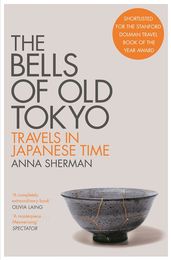Synopsis
As read on BBC Radio 4 'Book of the Week'
Shortlisted for the Stanford Dolman Travel Book of the Year Award
Longlisted for the RSL Ondaatje Prize
'A completely extraordinary book . . . Delicately wrought, precise, lucid and strange as a dream' - Olivia Laing, author of The Garden Against Time
For over 300 years, Japan closed itself to outsiders, developing a remarkable and unique culture. During its period of isolation, the inhabitants of the city of Edo, later known as Tokyo, relied on its public bells to tell the time. In her remarkable book, Anna Sherman tells of her search for the bells of Edo, exploring the city of Tokyo and its inhabitants and the individual and particular relationship of Japanese culture - and the Japanese language - to time, tradition, memory, impermanence and history.
Through Sherman’s journeys around the city, we hear a series of hauntingly memorable voices in the labyrinth of the Japanese capital. An aristocrat plays in the sea of ashes left by the Allied firebombing of 1945. A scientist builds the most accurate clock in the world, a clock that will not lose a second in five billion years. A sculptor eats his father’s ashes while the head of the house of Tokugawa reflects on the destruction of his grandfather’s city.
The Bells of Old Toyko is a hauntingly original book about Tokyo and the Japanese relationship to time, memory and history.
'Every sentence, every thought Sherman has, every question she asks, every detail she notices, offers something. The Bells of Old Tokyo is a gift . . . It is a masterpiece' - The Spectator
Details
Reviews
Sherman’s is a special book. Every sentence, every thought she has, every question she asks, every detail she notices, offers something. The Bells of Old Tokyo is a gift . . . It is a masterpiece
[Sherman's] perambulations around the bells yield fascinating, frequently moving narratives . . . In Tokyo's every nook and cranny, she finds the possibility of something profound, something elevating
A subtle, beautifully written meditation . . . Profoundly moving . . . The bells of old Tokyo are no longer heard, but this lyrical yet serious work deserves ringing endorsement
A completely extraordinary book, unlike anything I have read before. At once modest in tone and vast in scale and ambition . . . Delicately wrought, precise, lucid and strange as a dream
